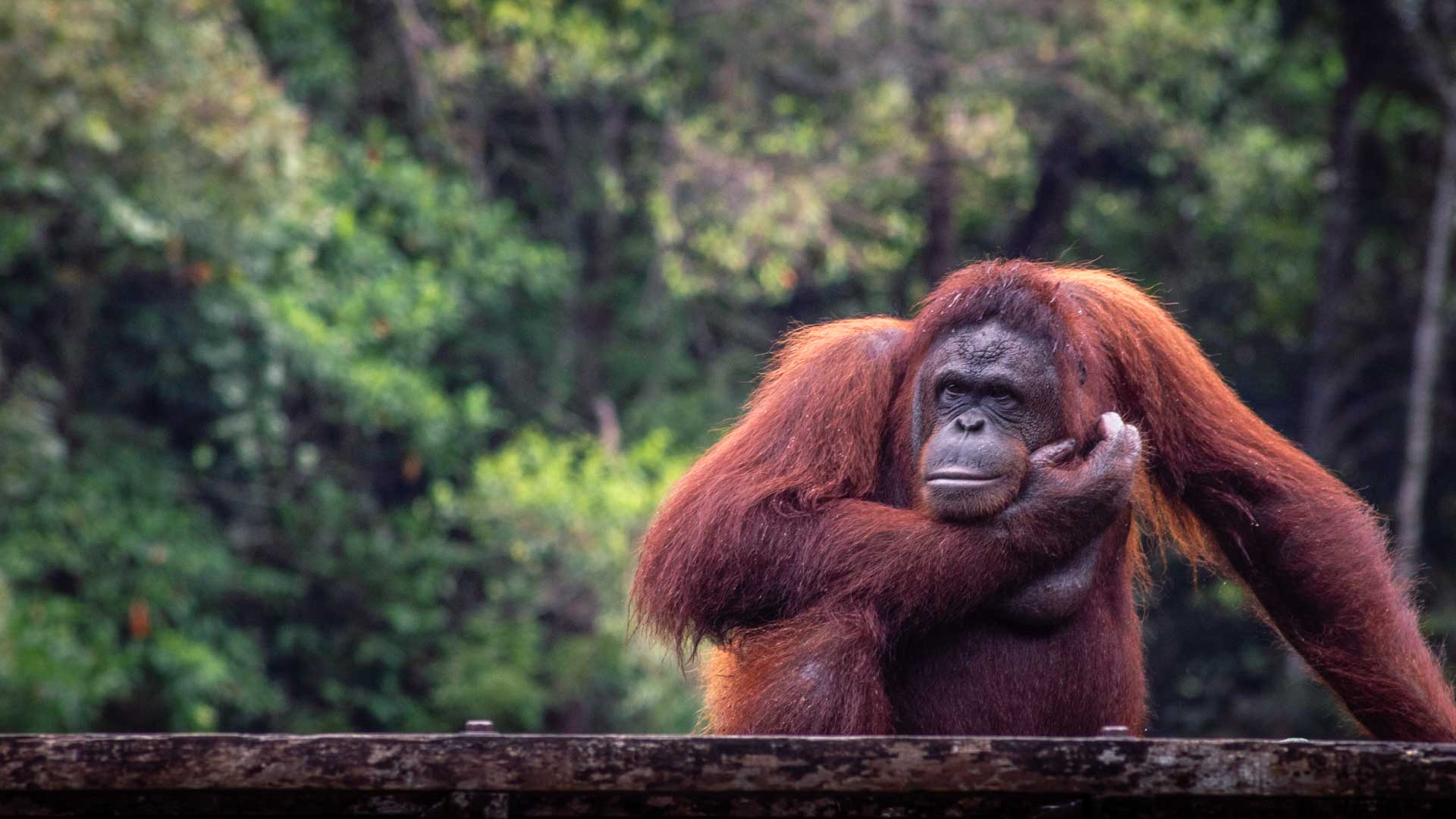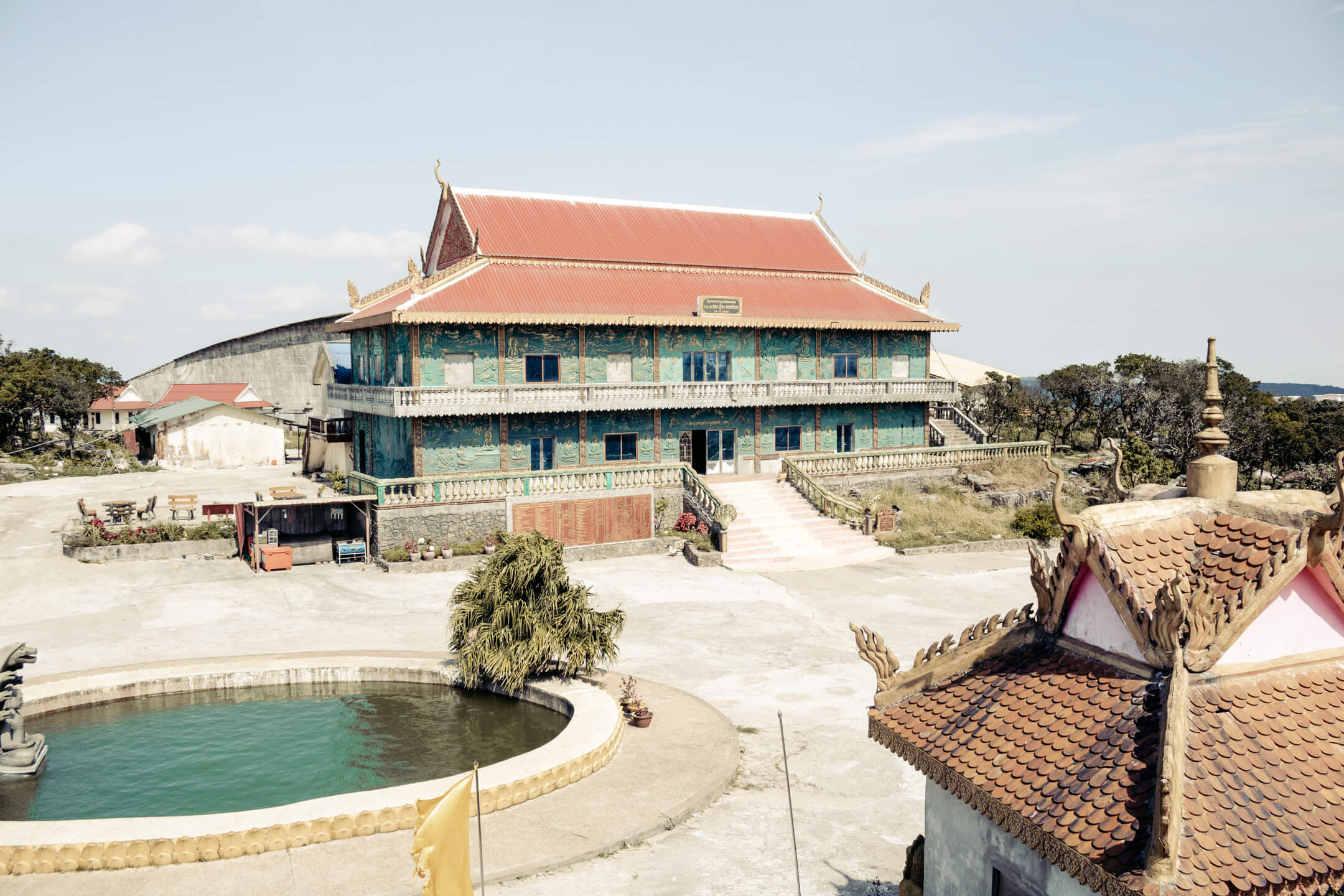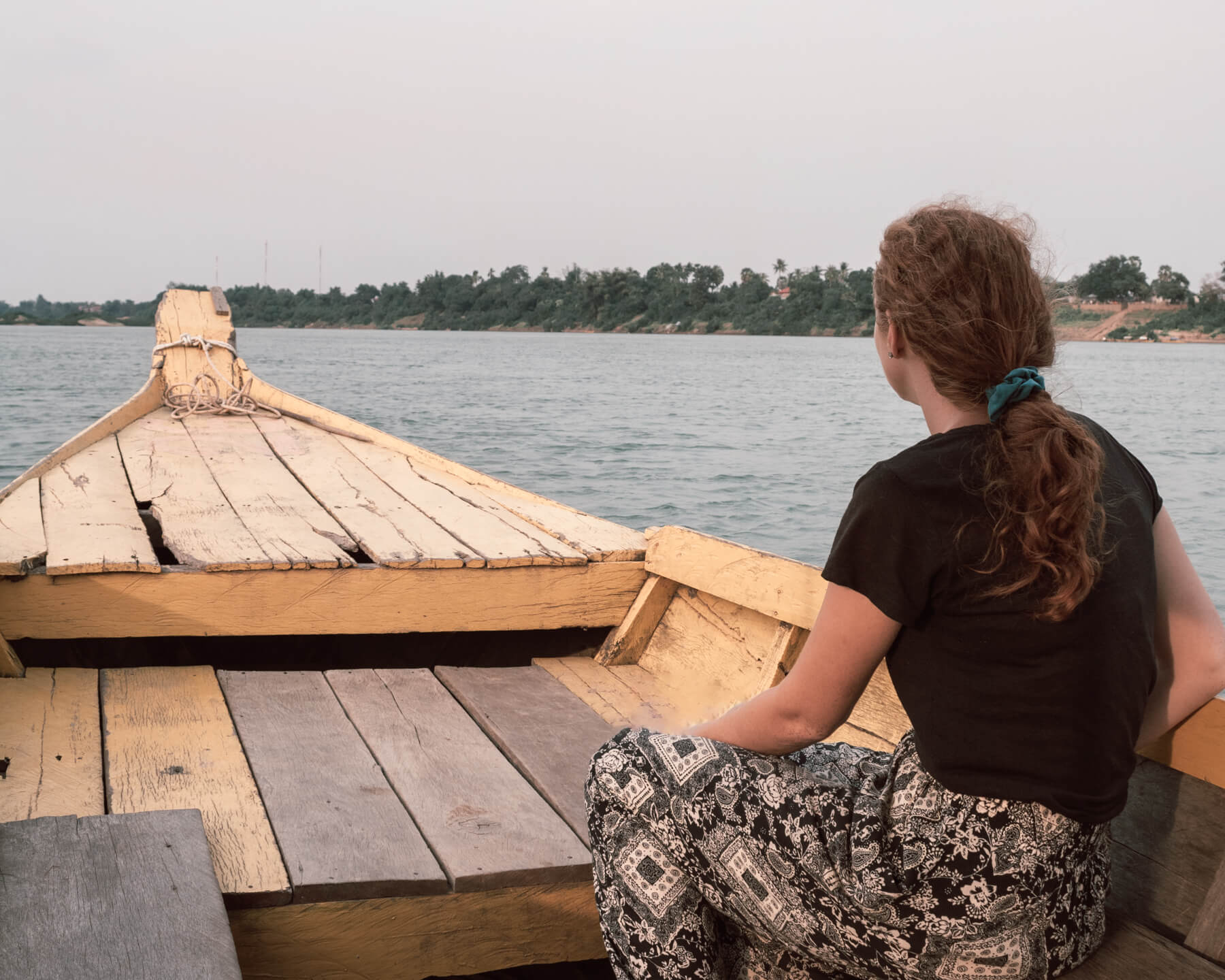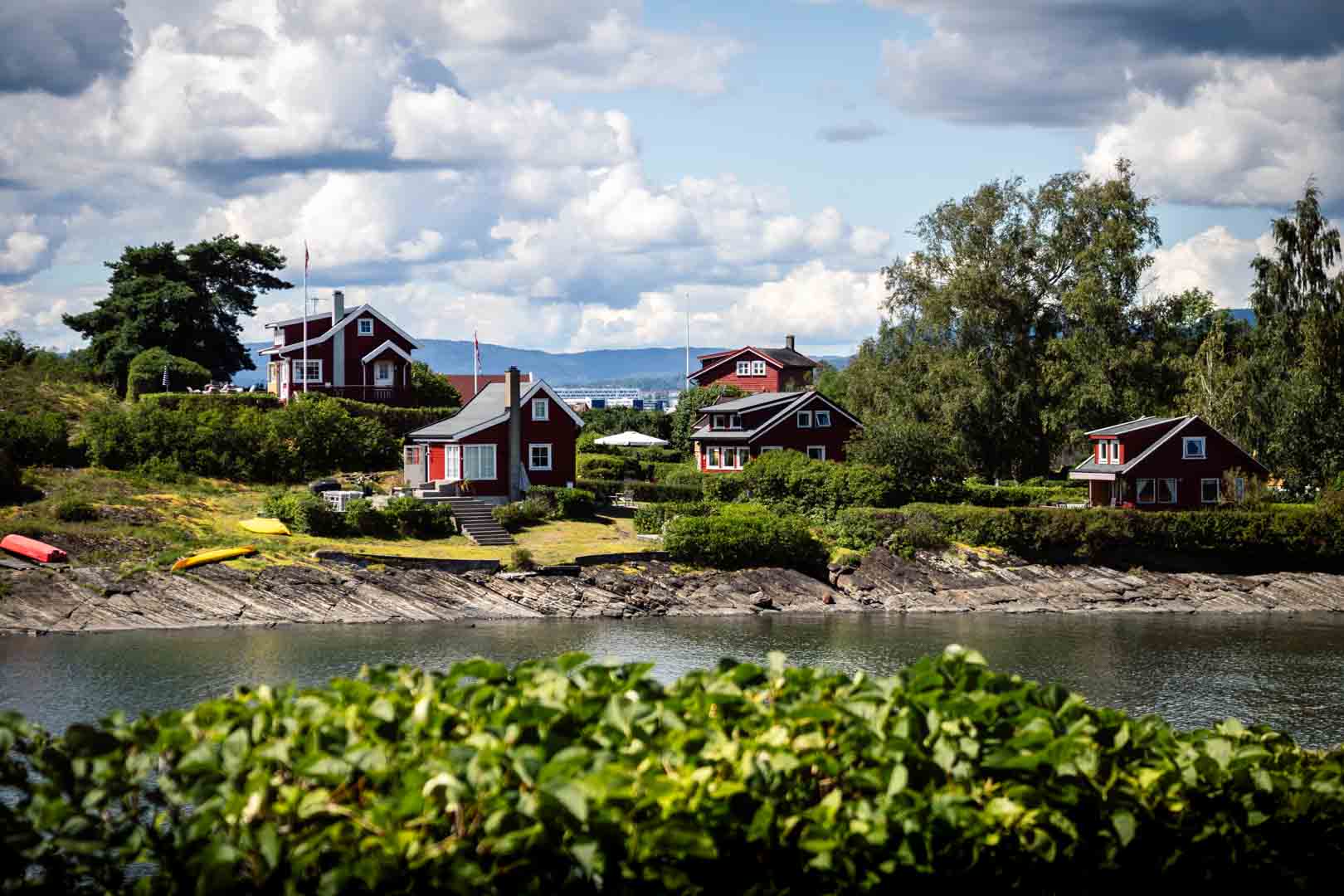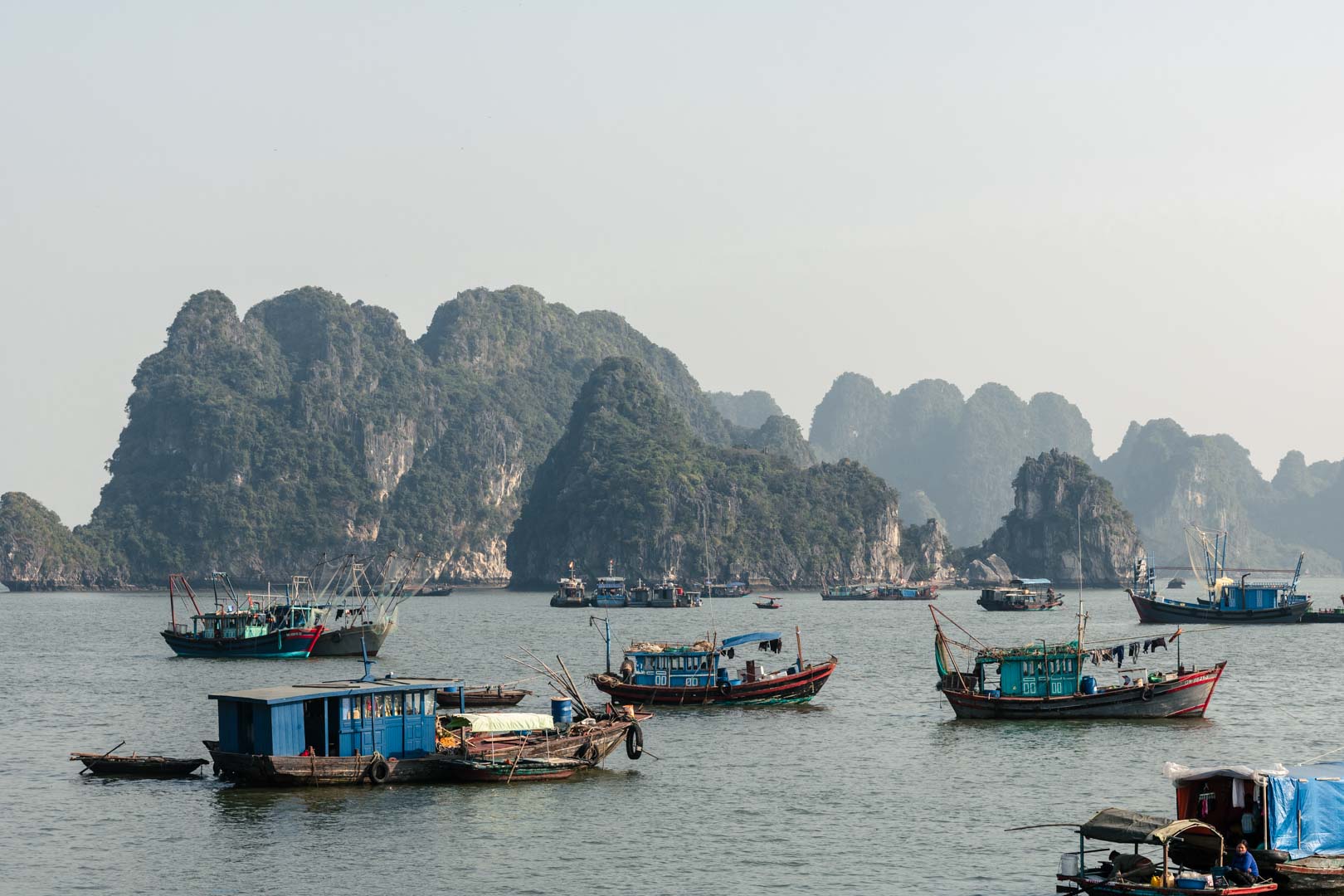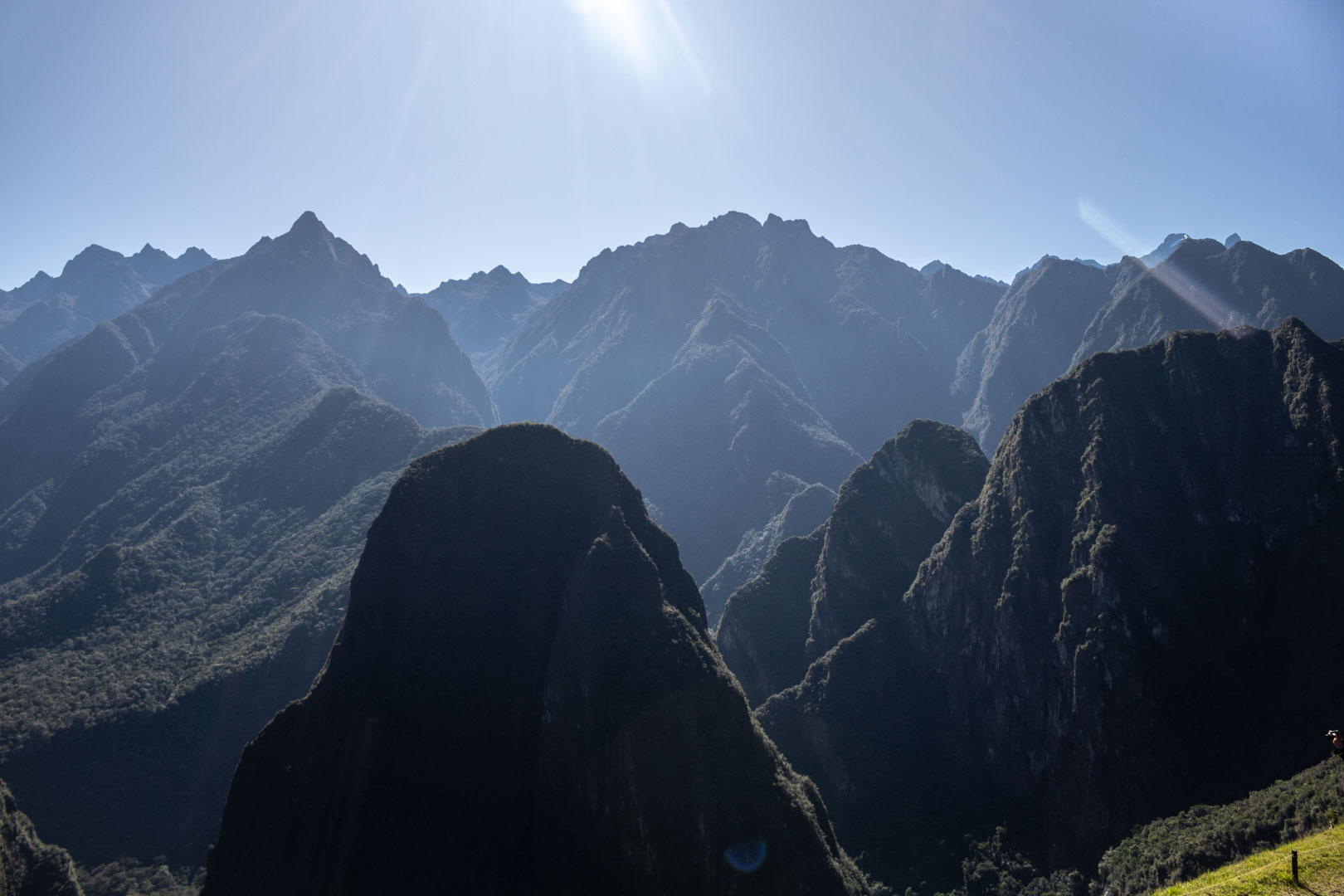Where To See Orangutans In Borneo (Malaysian Borneo)
Last Updated: August 31 2024
If you’re planning a trip to Borneo, you’ll likely want to spot the ‘Man of the Forest’. Famous for their distinctive red fur, orangutans are extremely intelligent and spend the majority of their time high up in the trees. Because of this, spotting these great apes can be challenging!
Luckily, If you’re heading to Malaysian Borneo, you won’t be short of viewing options. However, the choices available to you will depend on your chosen location, timeframe, budget, and mobility among other things.
In this guide, we’ll cover the best places to see orangutans in Borneo. This will include reserves in the two states of Sabah and Sarawak, as well as rehabilitation centres to offer you the best chances.
Some posts on this site contain affiliate links. If you buy or book something through these links, we earn a small commission, but at no extra cost to you! If you want to learn more, you can take a look at our privacy policy!
The Best Places To Spot Orangutans In Borneo
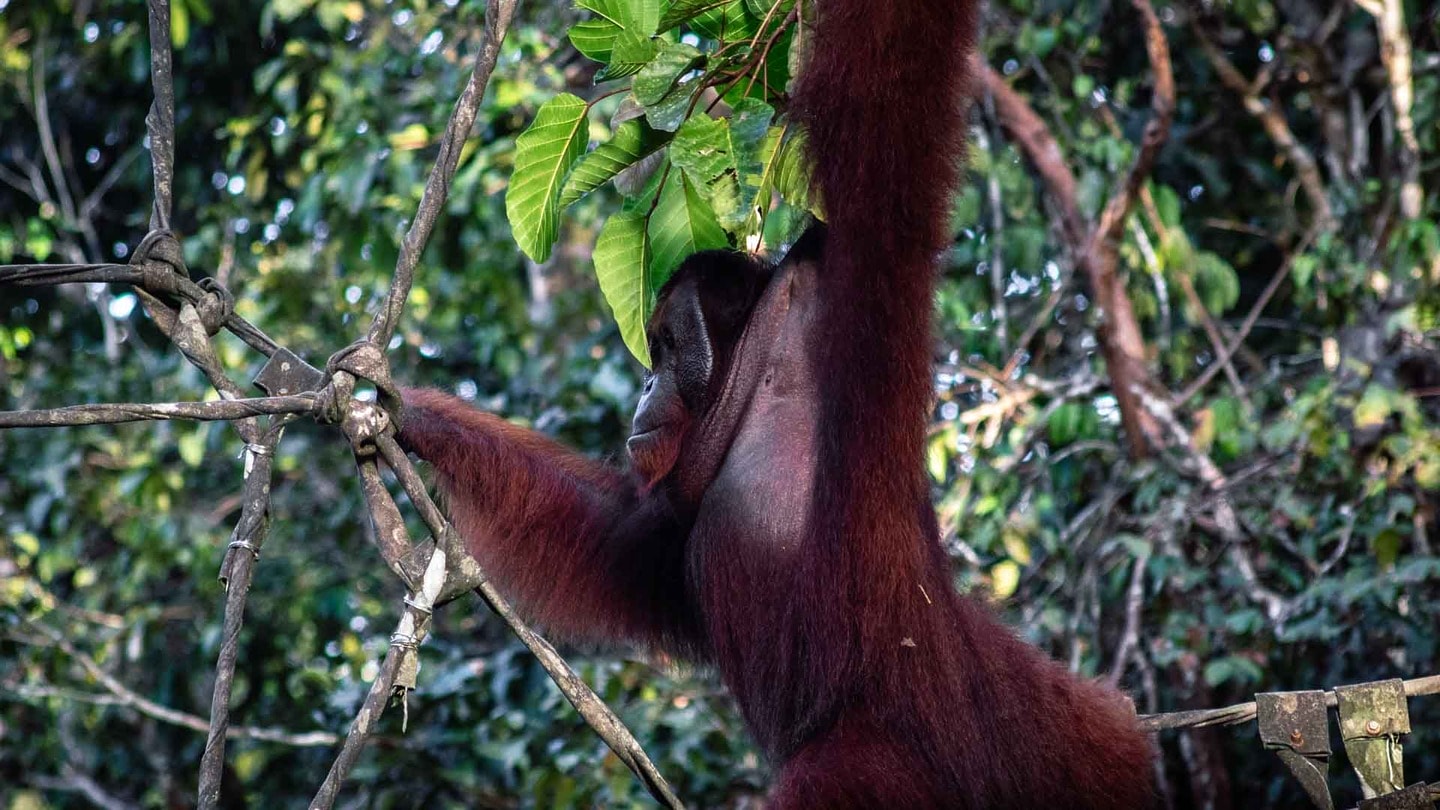
When it comes to spotting orangutans in Malaysia (Borneo), there’s one main distinction to keep in mind. There are several national parks and centres in this part of the island. Some are home to semi-wild orangutans living in that area, while others are home to wild orangutans.
Seeing any orangutan is a magical experience in our minds, but it all depends on what you’re after. For those who are short of time, the rehabilitation centres are your best option.
However, if you’re looking for a ‘wilder’ adventure, then head to one of the forest reserves. There are plenty to choose from, but keep in mind this kind of trip will likely be more expensive. You can also visit many of Borneo’s reserves independently, but tours offer much more convenience.
Before we dive into each location in more depth, here’s a quick overview of the most popular options:
Semi-Wild Orangutans
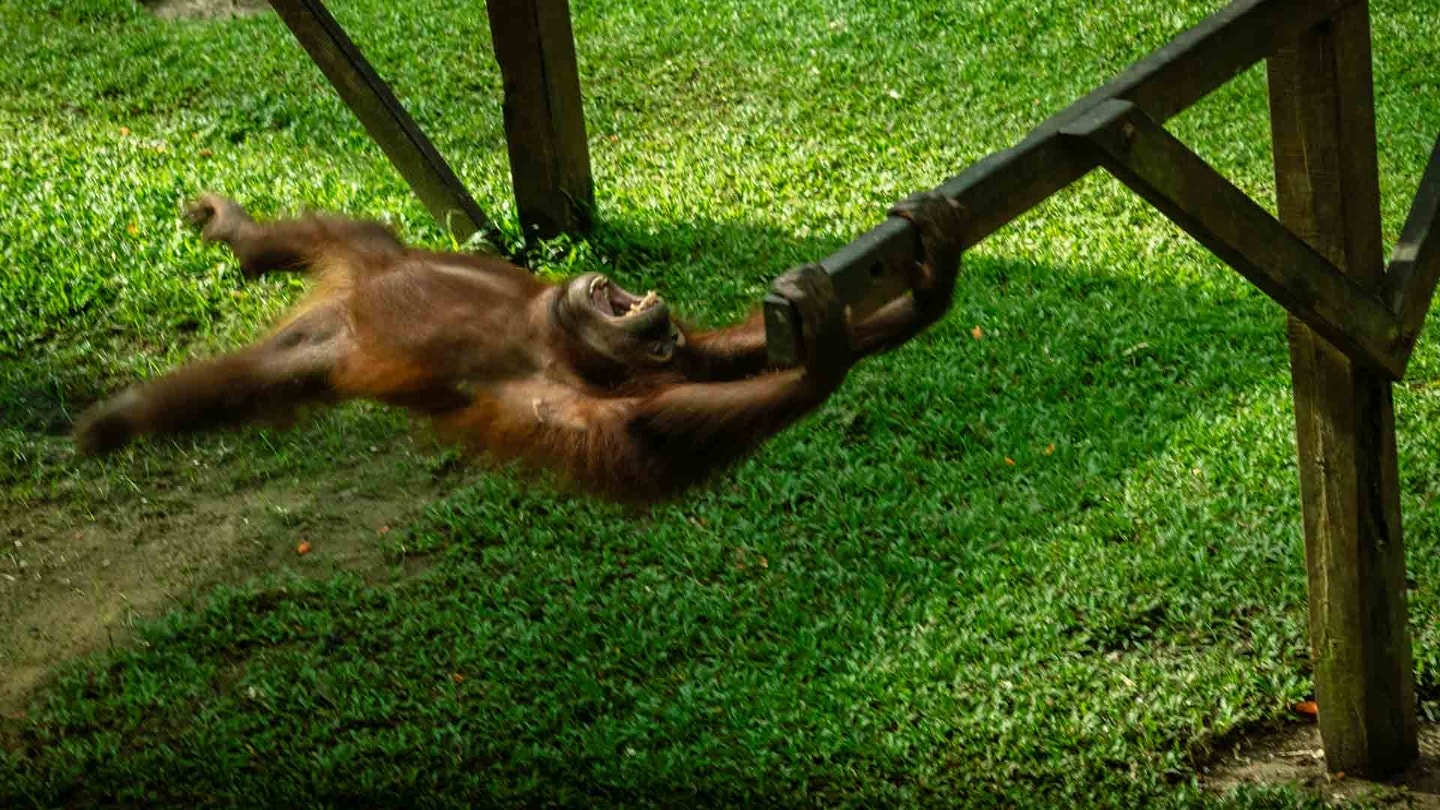
| National Park/Centre | Location | Estimated Orangutan Population |
| Sepilok Orangutan Rehabilitation Centre | The Sepilok-Kabili Forest Reserve, Sabah | 60-80 Orangutans |
| Semenggoh Nature Reserve | Near Kuching, Sarawak | 20-30 Orangutans |
| The Matang Wildlife Centre | Kubah National Park, Sarawak | Unknown |
Wild Orangutans
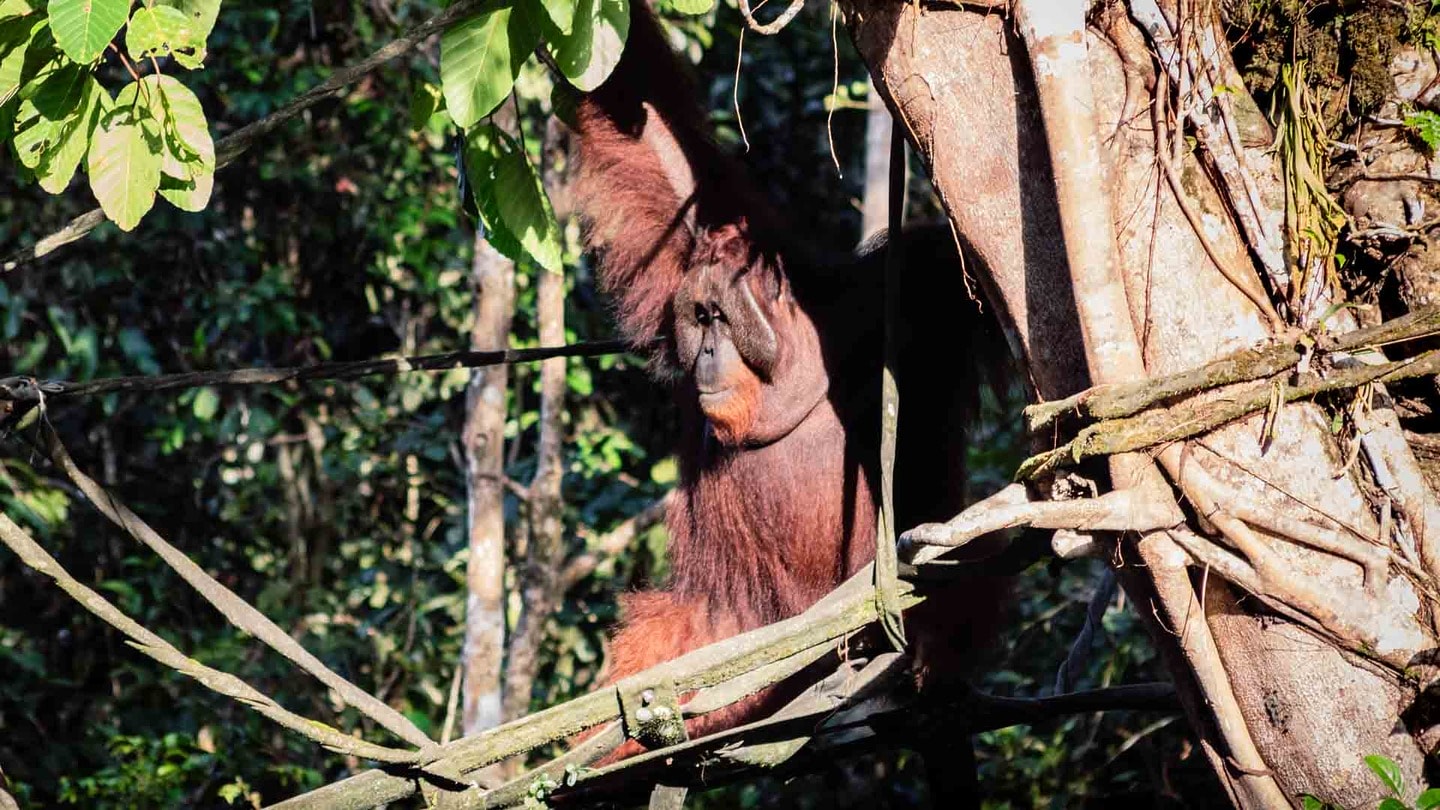
| National Park/Centre | Location | Estimated Orangutan Population |
| Kinabatangan Wildlife Sanctuary | Near Sandakan, Sabah | Over 1,000 Orangutans |
| Tabin Wildlife Reserve | Near Lahad Datu, Sabah | Around 1,400 Orangutans |
| Danum Valley | Near Lahad Datu, Sabah | Around 500 Orangutans |
| Deramakot Forest Reserve | Near Telupid, Sabah | Around 1,400 Orangutans |
| Batang Ai National Park | Near Lubok Antu, Sarawak | Over 1,000 Orangutans |
Where To See Semi-Wild Orangutans In Borneo
1. Sepilok Orangutan Rehabilitation Centre, Sabah

If you’re looking to spot orangutans in Sabah, Sepilok Orangutan Rehabilitation Centre may be the place for you! Established back in 1964, it was the world’s first centre in orangutan rehabilitation.
Sepilok Orangutan Rehabilitation Centre covers around 43 sq km (16 sq miles). It’s run by the Sabah Wildlife Department and is home to a large reserve, clinic, treatment ward, and nurseries where orphaned orangutans are cared for.
There are between 60-80 orangutans living independently here although they’re semi-wild. As such, there’s no guarantee you’ll spot one so keep that in mind.
Sepilok Orangutan Rehabilitation Centre is open daily, from 9 am to 4 pm. Orangutan feeding times are 10 am and 3 pm and the nursery visiting hours are 9 am – 12 pm (9 am – 11 am on Fridays). To help out the centre, you can also choose to adopt an orangutan!
How to get to Sepilok
To reach Sepilok, you’ve got a couple of options. If you’re staying in the area, then your best option is to take a GRAB taxi to the rehabilitation centre. Some guesthouses may even be within walking distance.
For those in Sandakan, you can take a public bus to Sepilok. The journey takes around 45 minutes and tickets are very affordable. Just be aware that they don’t run very regularly so you’ll want to check the times in advance. Alternatively, some hotels have a shuttle service or you can hop in a taxi.
2. Semenggoh Nature Reserve, Sarawak
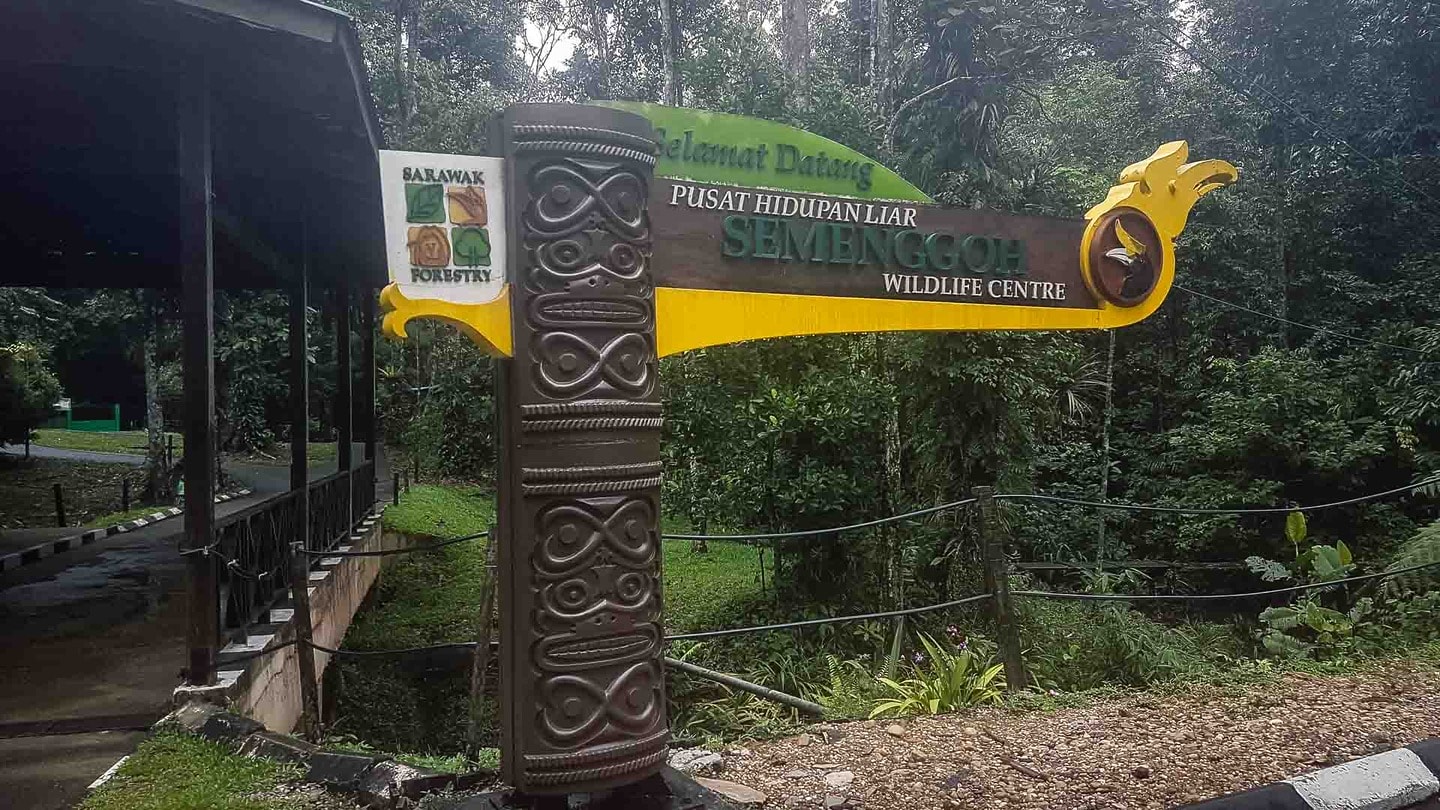
Visiting Semenggoh Nature Reserve is undoubtedly one of the top things to do in Borneo! It’s the biggest Orangutan Rehabilitation Centre in Sarawak and has been around since 1975.
Semenggoh looks after orangutans who have been kept illegally as pets, orphaned or injured. They then live in the reserve, but will often come back to the centre’s feeding platforms to grab a free meal. If you’re short of time, this is a great option for those who want to spot semi-wild orangutans.
Feeding times at Semenggoh Nature Reserve take place twice daily; in the morning (9 am – 10 am) and in the afternoon (3 pm – 4 pm). Just keep in mind that your chances of seeing orangutans are lower during the forest fruiting season, as they’ll have all the fruit they need!
As well as heading here for feeding, you can also head to the Botanical Research Centre and the Orangutan Gallery during your visit.
How to get To Semenggoh Nature Reserve
Semenggoh Nature Reserve is very accessible with most people visiting from Kuching. The drive from Sarawak’s largest city takes around 30 minutes, so you can always hire a car if you wish.
The most popular option is to take a taxi, which is what we did. We used the taxi app GRAB, although there’s a taxi stand in Kuching that you can use, too. Direct buses also run from the city and these will stop at the ticket booth.
Alternatively, local agencies run guided tours to Semenggoh, which allow you to learn a bit more about the reserve and its inhabitants.
3. The Matang Wildlife Centre, Sarawak

The Matang Wildlife Centre is located in Kubah National Park, around a 40-minute drive from Kuching. This wildlife centre houses various endangered species, which are rehabilitated and then released back into the forest.
Many of the animals at this centre (including the orangutans) have been confiscated, as they were being kept illegally as pets. The centre teaches them how to fend for themselves before releasing them back into the wild!
The one thing to remember is that the Matang Wildlife Centre is not a zoo. It’s a dedicated wildlife rehabilitation centre that can often seem run-down at first glance. However, the staff do the best they can, especially with a limited budget.
The Matang Centre is run with help from volunteers (you can head here yourself with the Great Orangutan Project. Alternatively, you can visit for the day Monday to Sunday, 8 am to 5 pm.
How To Get To The Matang Wildlife Centre
There are no direct public transport links to Matang Wildlife Centre. There is a bus that runs to Kubah National Park (City Link Bus K21), but you’ll need to take a taxi from there to reach the centre.
As services aren’t frequent, we’d recommend just taking a taxi. We used the GRAB taxi app to travel from Kuching and found the price to be very reasonable.
However, the ticket office advised us to organise a return time with the taxi driver or ask him to wait. This is due to the centre’s location, as it’s pretty much in the middle of nowhere. We arranged for the driver to come back 1.5 hours later which gave us plenty of time to walk around the centre.
Where To See Wild Orangutans In Borneo
4. Kinabatangan Wildlife Sanctuary, Sabah
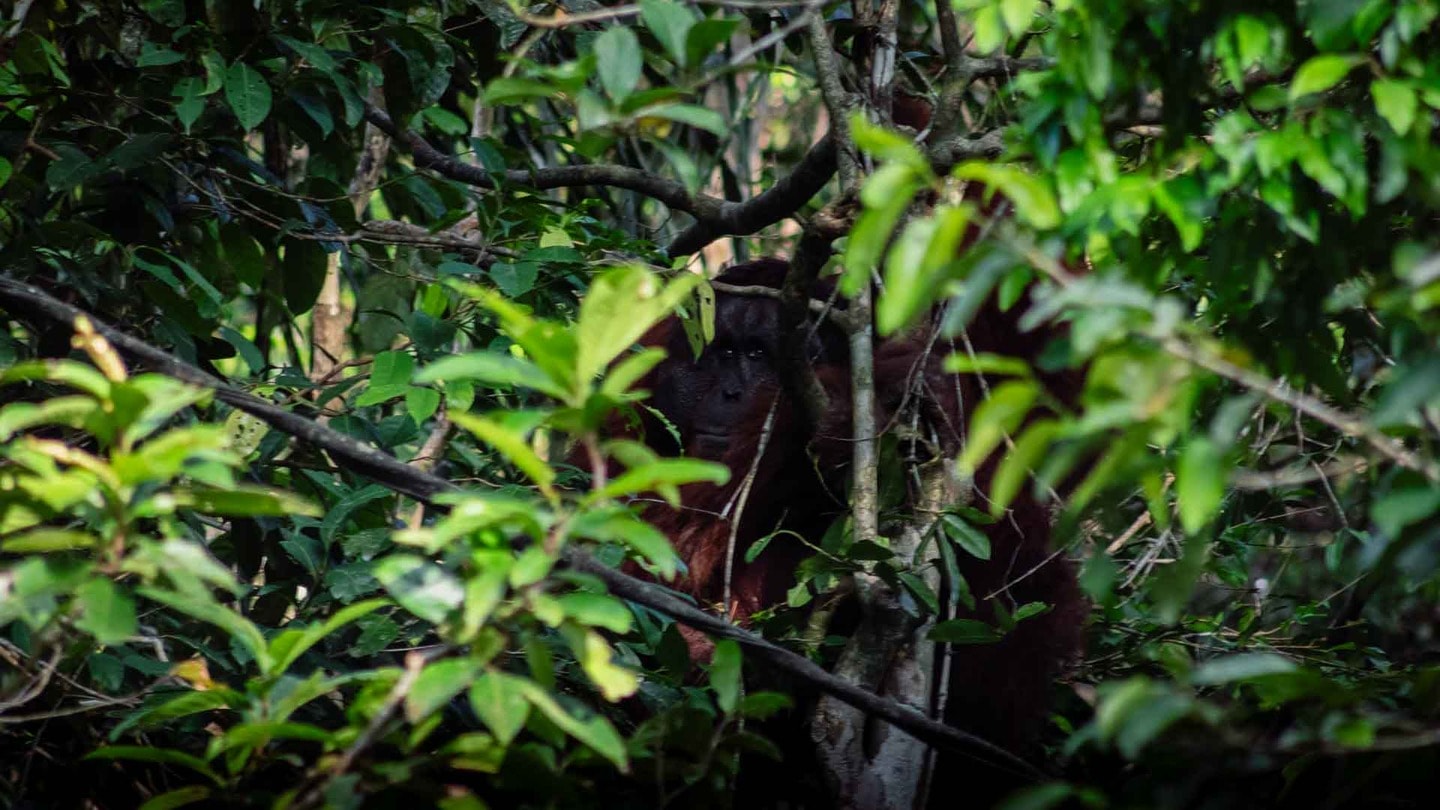
The Kinabatangan River is undoubtedly one of the best places to spot orangutans in Borneo! It’s Sabah’s longest river at 560 km (348 miles) long and passes through various terrain, including mangroves.
Thanks to this, the area is very biodiverse. As such, you’ll find a variety of wildlife here including proboscis monkeys, Bornean pygmy elephants, crocodiles, gibbons, hornbills, and more! If you’re lucky, you might even spot Irrawaddy dolphins in the river, although the orangutans are the highlight.
During our time here, we were lucky enough to spot our first-ever wild orangutan. It was a huge male and we got to watch him for a while, as he sat in the treetops!
River cruises offer the best way to explore, but jungle treks are popular too. In our Kinabatangan River guide, we discuss how to visit, what you’ve got a chance to see, and how much you can expect the trip to cost!
How To Get To The Kinabatangan Wildlife Sanctuary
To reach the Kinabatangan River, you must first travel to Sandakan or Sepilok. From here, you’ll then typically head to Sukau, a charming village located within the rainforest.
Although many people head to the Kinabatangan River on a package deal, we headed there independently as it worked out cheaper. Many hostels/hotels offer transfers to Sukau, or you can opt for the shuttle bus.
Alternatively, some lodges will include your transport, and you’ll travel by boat from Sandakan. Even if it’s not a package deal, other properties will offer transfers for a fee. You can drop them a message in advance if you’re unsure!
5. Tabin Wildlife Reserve, Sabah

When it comes to finding orangutans in Borneo, Tabin Wildlife Reserve is one of the best spots. This reserve covers over 120,000 hectares making it one of Sabah’s largest protected areas.
Tabin Wildlife Reserve was declared a protected area in 1984 due to its variety of wildlife. In this reserve, you’ll find various species, including the Sumatran Rhinoceros, Borneo Pygmy Elephant, and Banteng. Although sightings are rare, clouded leopards can also be found here.
As well as orangutans, there are plenty of other primates living in the reserve including the Bornean gibbon, silvered leaf monkey, western tarsier, slow loris, and long-tailed macaques.
There are several hiking trails in Tabin which offer great wildlife-watching opportunities. Not to mention, there are a few reserve roads where 4×4 safaris take place, which are especially fun at night! You’ll also find some beautiful lodges in Tabin where you can stay overnight.
How To Get To Tabin Wildlife Reserve
To visit Tabin Wildlife Reserve, you’ll need to reach Lahad Datu first. From Kota Kinabalu, flights take approximately an hour with departures being operated by Malaysia Airlines.
From Lahad Datu, it takes under 1.5 hours to reach the wildlife reserve. Alternatively, travellers can travel all the way to Tabin by road, although this takes around 7 hours so it’s quite the journey!
Your other option is to travel from Sandakan or Tawau (the journey will take around 4 hours). This is a popular option, as people then spend a couple of days visiting Sepilok first, where two wildlife centres are located (BSBCC and SORC).
6. Danum Valley, Sabah

As one of the wildest places in Sabah, Danum Valley is a must-visit. The ancient rainforest here is 130 million years old and is home to some of the tallest trees in the tropics. Some tower an impressive 100 metres (328 feet) above the forest floor so you’re in for quite the adventure.
As with all the national parks and reserves in this guide, the wildlife-watching opportunities are a highlight. Over 100 mammals are found in Danum Valley including orangutans, Bornean pygmy elephants, clouded leopards, and Bornean gibbons.
The great thing about visiting this reserve is that you can check wildlife sightings online before you visit.
Danum Valley covers an area of 438 sq km (169 sq miles) so there’s plenty to explore. There are some great hiking trails in this area, but the canopy walks will take your breath away. From here, you’ll be treated to epic jungle views!
How To Get To Danum Valley
As with Tabin Wildlife Reserve, you’ll need to reach Lahad Datu first if you want to visit Danum Valley. As such, your best option is to fly from Kota Kinabalu or you can take the bus.
Minivans run from the state capital of Sabah (Kota Kinabalu), as well as Tawau, Semporna, and Sandakan. Although it will be a longer journey to Lahad Datu, you’ll be awarded a scenic journey.
From Lahad Datu, it’s around an 81 km (50 miles) drive to Danum Valley. The majority of the journey takes place on a logging road so it’s a bumpy ride!
7. Deramakot Forest Reserve, Sabah
Deramakot Forest Reserve is run by the Sabah Forestry Department and is one of Borneo’s best wildlife-watching destinations. Covering over 55,000 hectares, this reserve is home to 75% of Sabah’s mammal species so you can expect to see plenty of wildlife.
Deramakot is considered one of the best places to see orangutans in Borneo, as it’s estimated to have a population of around 1,400 individuals.
As well as orangutans, Deramakot is a great place to spot other species such as banteng, pygmy elephants, and proboscis monkeys. All five species of Bornean cats are found here too, including the Sunda clouded leopard, marbled cat, and leopard cat.
When visiting Deramakot, you’ll likely visit on a tour. These packages typically include various activities such as jungle trekking, 4×4 wildlife drives, and night walks. You’ll also be staying overnight in the reserve so you’re truly in for the adventure of a lifetime.
How To Get To Deramakot Forest Reserve
Deramakot Forest Reserve is one of the most remote reserves in Malaysian Borneo. It’s only accessible by 4×4 with journeys typically starting from Sandakan or the town of Telupid.
It’s also possible to get here from Kota Kinabalu although the journey takes around 7 hours. Although some people suggest it’s possible to visit independently, Deramakot can only accommodate a certain amount of travellers at a time, so visits need to be pre-arranged.
To visit Deramakot Reserve, you’ll want to organise your visit with a local tour operator. Just make sure you shop around for an ethical tour agency.
8. Batang Ai National Park, Sarawak

When it comes to spotting orangutans in Malaysia, you can head to either Sabah or Sarawak. In terms of the latter, Batang Ai National Park is one of your top options!
Thanks to the creation of Batang Ai Hydro Lake, travellers now have access to the national park. As well as seeing wild orangutans roaming in the treetops, you might spot other wildlife, such as Bornean gibbons, clouded leopards, bearded pigs, and giant squirrels.
There are five designated hiking trails in the park, and these offer the best way to explore the park. Just keep in mind that you’ll need to be accompanied by a park ranger or registered guide at all times. As such, you’re best off visiting with an organised tour.
As well as wildlife, Batang Ai National Park is also home to Sarawak’s largest ethnic group, the Iban. These people still live in traditional longhouses and you can actually stay overnight in them if you’re after a cultural experience.
How To Get To Batang Ai National Park
To reach Batang Ai, you’ll need to take a motorized traditional longboat. These typically depart from the Batang Ai public jetty or Aiman Batang Ai Resort jetty, and the journey takes around two hours.
To reach the jetty, it’s around a 4-5 hour drive from Kuching. The majority of travellers will travel to the reserve as part of an organised tour, which is the most convenient option.
Alternatively, you can travel to the national park independently. However, this is much more difficult and isn’t something we’d recommend as there’s no public longboat service. You’ll need to arrange transport in advance, or your only other option is to try and get a free ride from one of the locals.
Where Should I Go in Malaysian Borneo?
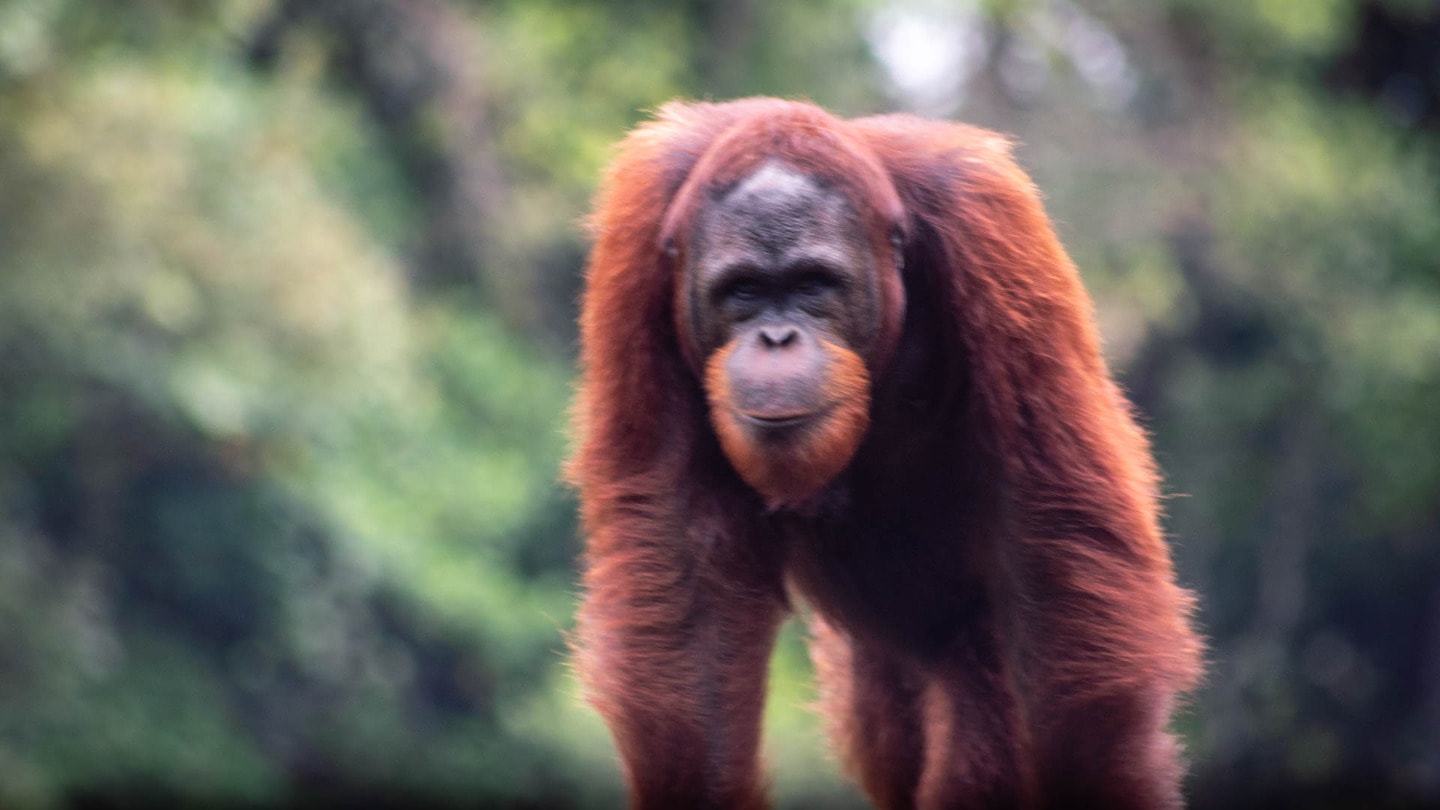
In our opinion, there’s no ‘best place to see orangutans in Borneo’, it all depends on what’s best for you! If you’re planning to explore Sarawak, then you’re best visiting the local rehabilitation centres.
Semenggoh Nature Reserve and The Matang Wildlife Centre are both accessible on a day trip from Kuching. However, these centres only offer you the chance to spot semi-wild orangutans.
For the best experience, we’d recommend heading to Sabah. The Kinabatangan Wildlife Sanctuary was a highlight of our trip through Southeast Asia and is where we saw our first wild orangutan.
While in Sabah, you can also head to Danum Valley, Tabin Wildlife Reserve, and Deramakot Forest Reserve. Each of these places offers you the chance to spot orangutans, as well as various other wildlife.
There’s also the Sepilok Orangutan Rehabilitation Centre, where you can spot semi-wild orangutans (while here, head to the Bornean Sun Bear Conservation Centre too).
Where Else Can You See Orangutans In Borneo?
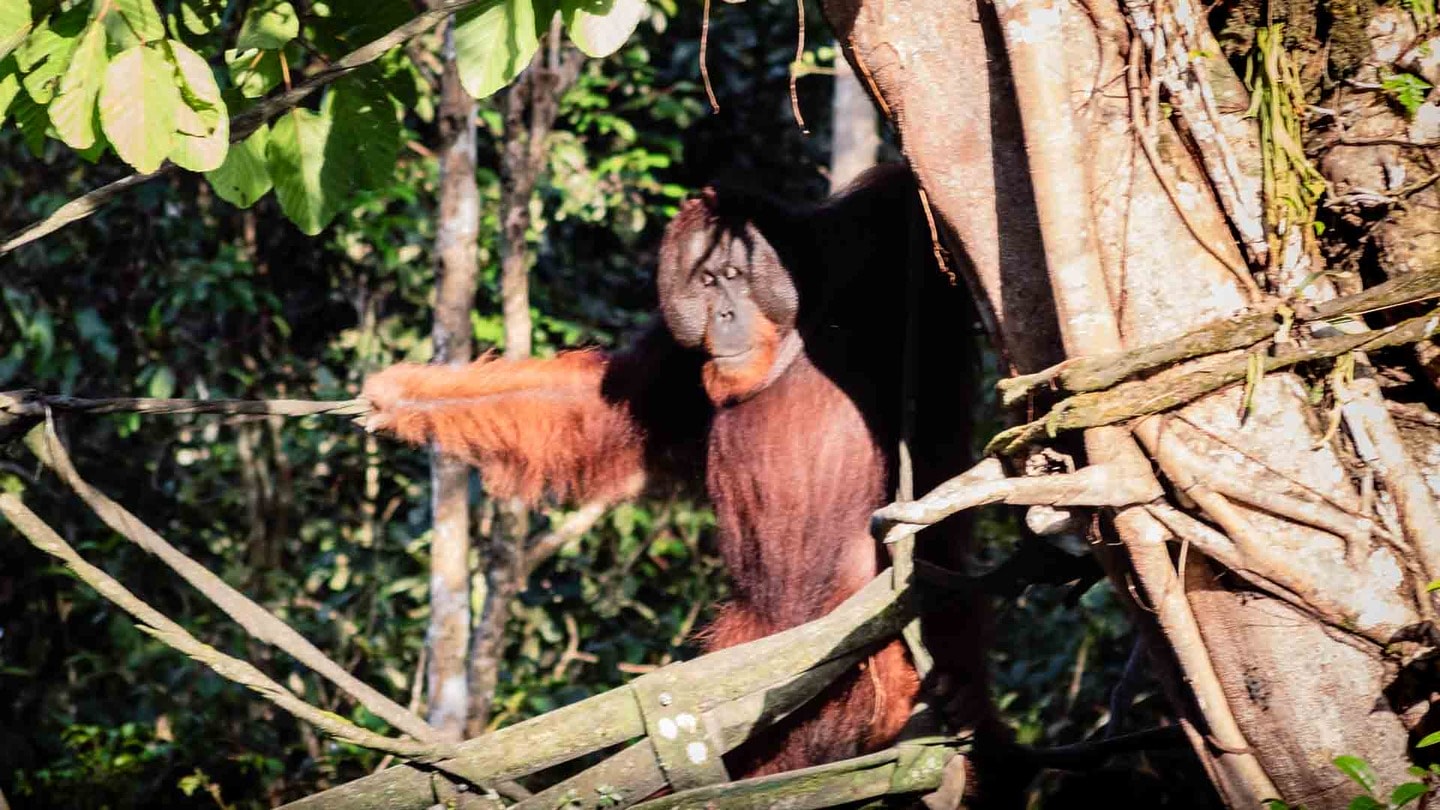
This guide specifically covers seeing orangutans in Malaysia (Malaysian Borneo). However, if you’re planning to travel around this incredible island, then you can always head to Indonesian Borneo as well.
If that’s the case, then Tanjung Puting National Park is your best bet. Located in Kalimantan, Tanjung Puting is one of Borneo’s most accessible parks. Here, you’ve got a good chance of spotting free-roaming orangutans as you hike through the jungle.
There’s also Kutai National Park in East Kalimantan, along with two others located in West Kalimantan (Gunung Palung National Park and Betung Kerihun National Park). These all offer the opportunity to spot orangutans, as well as other fauna and flora.
For a more hands-on experience, why not volunteer with the Borneo Orangutan Survival Foundation? Also known as the BOSF, this organisation runs the world’s largest ape conservation program.
Tips for Spotting Orangutans in Malaysia (Borneo)
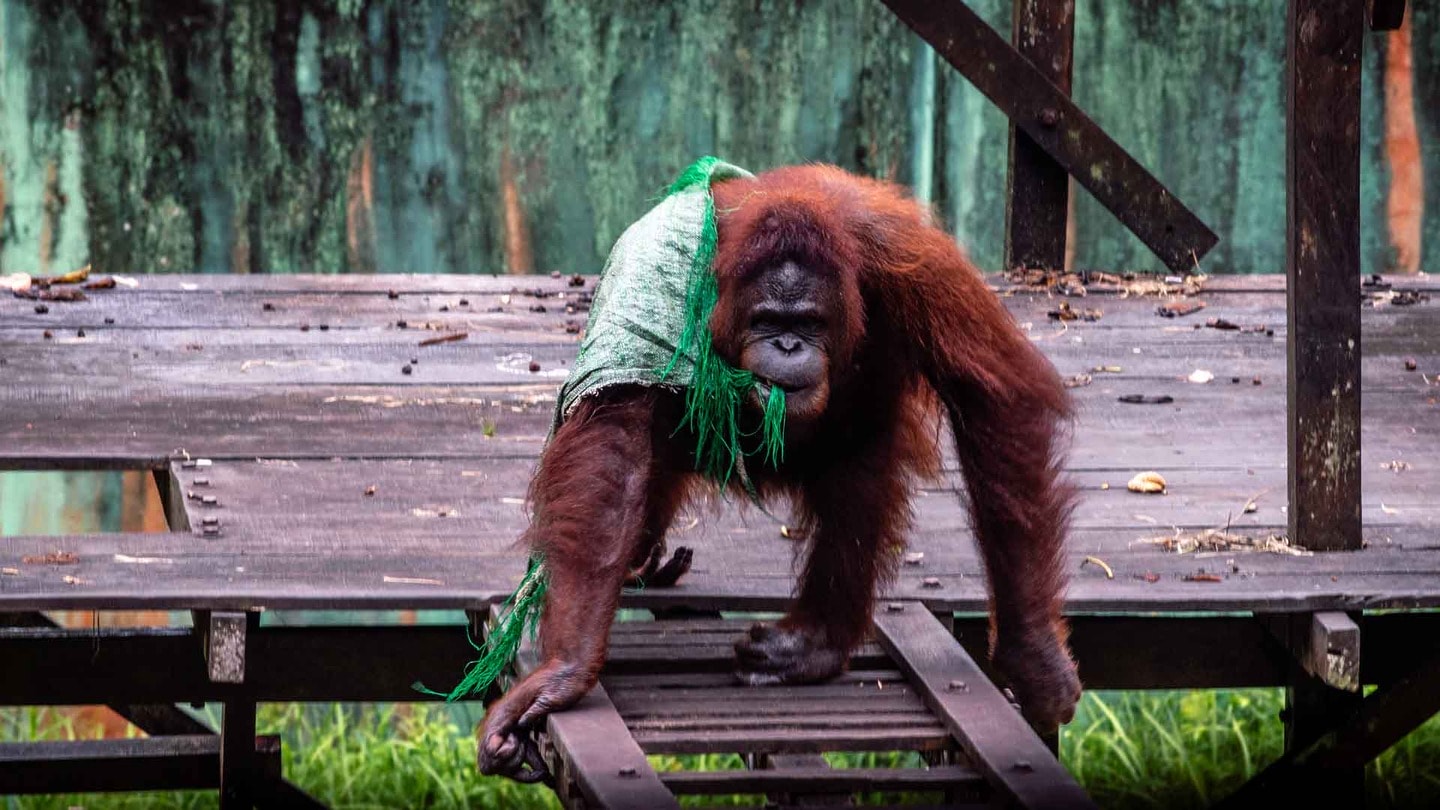
Borneo is a must for any Asia backpacking route, especially if you’re a wildlife lover.
Here are some travel tips to ensure you have the best experience:
- For the best chance of spotting orangutans in Borneo, make sure you don’t rush your time here. The longer you have to explore the parks and reserves, the better viewing opportunities you’ll have.
- If you’re looking for orangutan tours in Borneo, make sure you choose an ethical provider. You’ll also want to book well in advance. Alternatively, you can explore Borneo independently like we did.
- No matter when you visit, the climate in Borneo will be hot and humid. When hiking through the jungle, you must drink plenty of water, wear sunscreen, and keep covered, preferably with a hat.
- We’d recommend packing a zoom lens when visiting Borneo. This gave us the chance to shoot close-up shots of the orangutans (and other wildlife), without disturbing them.
Frequently Asked Questions About Orangutans In Borneo
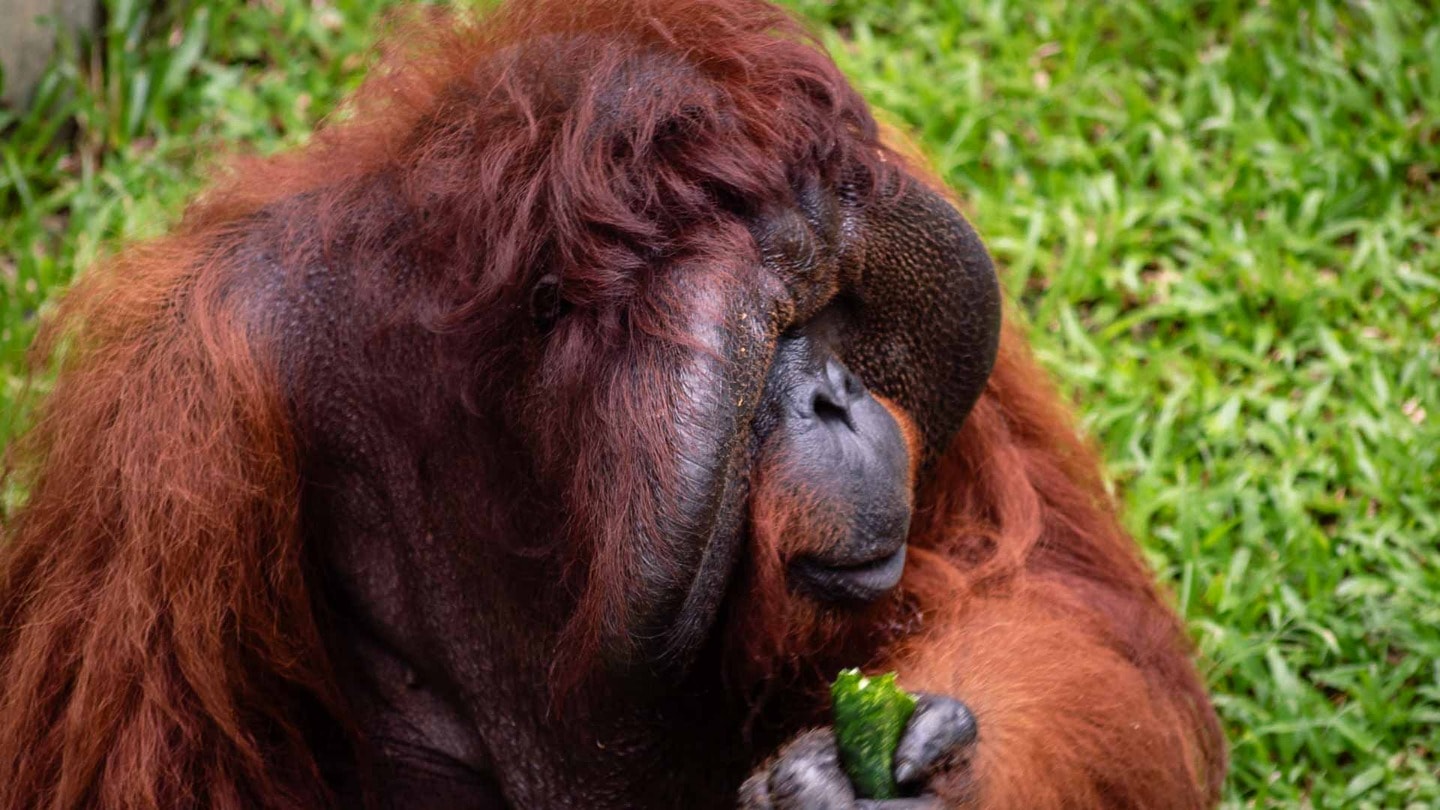
Where are orangutans found in Borneo?
Orangutans are located all over Borneo, in both the Malaysian and Indonesian parts of the Island. There are several national parks, forest reserves, and rehabilitation centres to choose from!
Highlights include Kinabatangan Wildlife Sanctuary, Danum Valley, and Tabin Wildlife Reserve (all found in Malaysian Borneo). There’s also Tanjung Puting National Park in Indonesia, among others.
When can you see orangutans in Borneo?
Typically the best time to see orangutans in Borneo is between May and late September. This is the dry season, so you’ll encounter the best weather in your search for these great apes.
From May, you’ll likely see orangutans swinging around in search of ripe fruit. If you’re lucky, you might even see newborn orangutans start to emerge now the weather has improved.
How many orangutans are left in Borneo?
The Bornean orangutan is considered critically endangered, and it’s thought there are only 104,000 left in the world. Populations are higher in Sabah compared to Sarawak.
Unfortunately, orangutan numbers have declined by over 50% in the past 60 years. This is mainly due to habitat loss from illegal logging and palm oil plantations, hunting, and agriculture.
Is Sumatra or Borneo better to see orangutans?
When it comes to numbers, Borneo offers a better chance of spotting orangutans. It’s thought there are less than 15,000 Sumatran orangutans in the world, while there are over 100,000 Bornean orangutans.
In Sumatra, there are only a couple of destinations where you can spot orangutans. However, in Borneo, you’ve got the choice of Indonesia or Malaysia (Sabah and Sarawak).
Final Thoughts on Finding Orangutans in Borneo
We fell in love with Borneo, and the orangutans played a huge part in this. Seeing these great apes in their natural environment is an experience like no other, which is why we’d highly recommend this magical destination to every traveller!
If you’ve not had enough of orangutan spotting in Borneo, then why not head over to Sumatra? We’d suggest Gunung Leuser National Park, where you’ve got a chance of spotting the Sumatran orangutan (in Borneo, it’s the Bornean orangutan).
If you have any questions about where to see orangutans in Malaysia (Borneo), don’t hesitate to contact us via Instagram, Facebook, or in the comments below!
Here are some other guides that you may find helpful:
PIN IT FOR LATER!
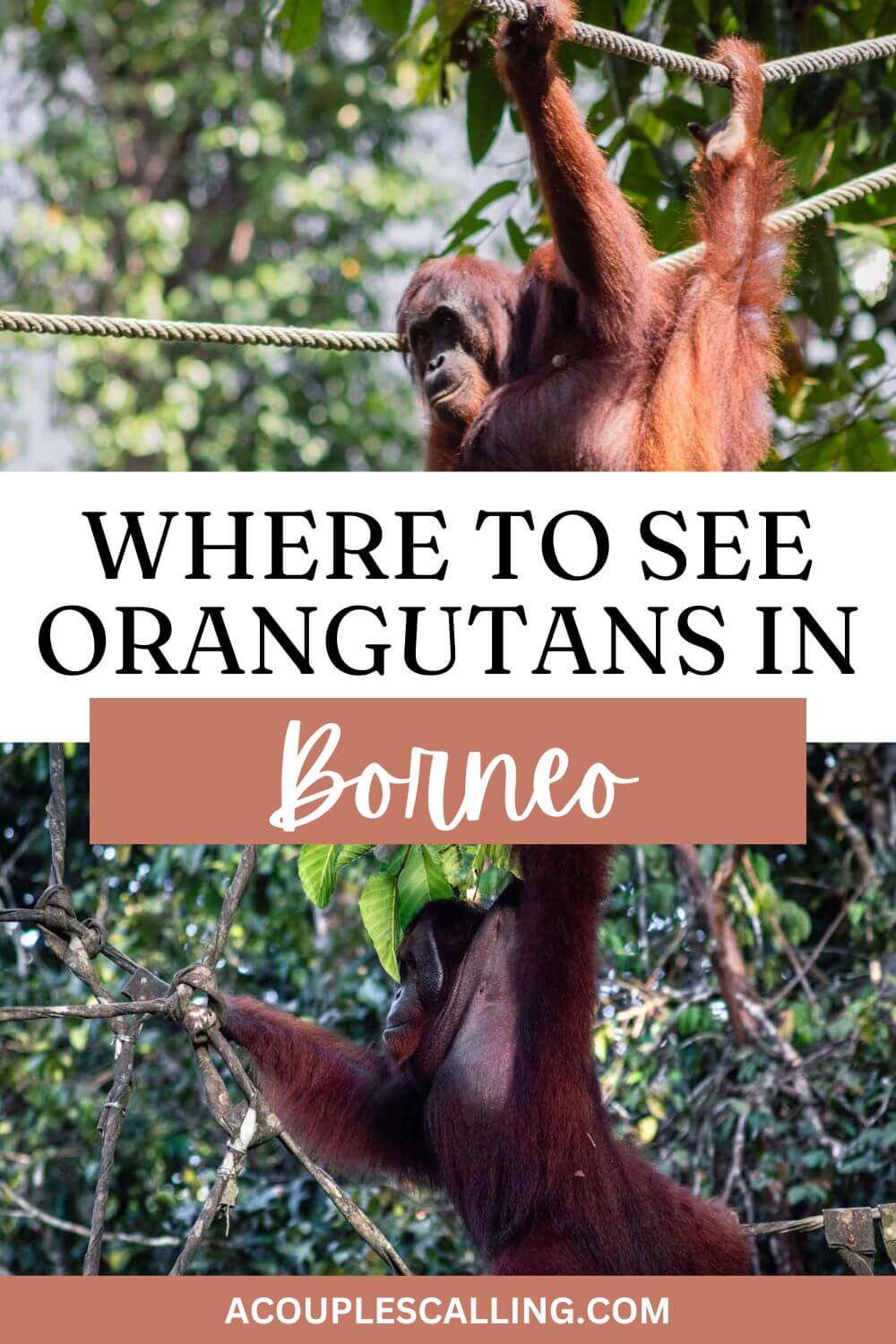
I breathe all things travel and nature, with my favourite place being the great outdoors! After exploring 3 continents, I’ve discovered my passion for travelling on a budget, and I want to help you all do the same. I honestly believe travel broadens the mind which is why I want to share all of our adventures!

